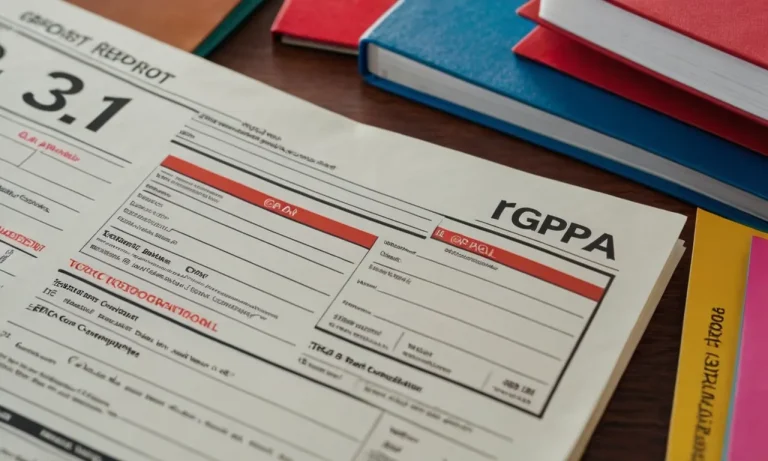In the realm of school nutrition, the era before Michelle Obama’s initiatives sparked a nationwide conversation. As debates raged over the quality and nutritional value of school meals, a closer examination of the pre-Obama era becomes crucial.
If you’re short on time, here’s a quick answer to your question: Before Michelle Obama’s tenure as First Lady, school lunches in the United States were often criticized for being high in fat, sodium, and calories, while lacking in essential nutrients.
The meals were heavily influenced by the food industry and lacked proper oversight, leading to concerns about childhood obesity and overall student health.
In this comprehensive article, we will delve into the state of school lunches before Michelle Obama’s initiatives, exploring the historical context, nutritional challenges, industry influences, and the growing calls for reform that ultimately paved the way for her groundbreaking efforts.
The Historical Context of School Lunches
The Origins of the National School Lunch Program
The National School Lunch Program (NSLP) has a rich history that dates back to the Great Depression era. In 1946, President Harry S. Truman signed the National School Lunch Act, which established the program as a way to provide nutritious meals to children and support agricultural markets.
The program aimed to promote the health and well-being of students by ensuring they had access to balanced meals during the school day.
Prior to the NSLP, many children from low-income families struggled with hunger and malnutrition, which negatively impacted their academic performance and overall development. The program was designed to address this issue and provide a safety net for families in need.
Initially, the NSLP focused on providing low-cost or free meals to students from economically disadvantaged backgrounds. Over time, it expanded to include children from all socioeconomic levels. According to the USDA, the program currently serves over 30 million children each school day.
Early Nutritional Guidelines and Challenges
In the early years of the NSLP, nutritional guidelines were not as stringent as they are today. Schools often served meals that were high in fat, sugar, and processed ingredients, reflecting the dietary trends of the time.
However, as research on nutrition and childhood obesity increased, the need for healthier school meals became more apparent.
One of the significant challenges faced by the program was balancing nutritional requirements with budgetary constraints. Schools often had to work with limited funds, which made it difficult to provide high-quality, nutrient-dense meals.
Additionally, there was a lack of standardized guidelines and regulations, leading to inconsistencies in the quality and nutritional value of school meals across different districts and states.
The Rise of Processed and Convenience Foods
As the food industry evolved and convenience foods became more prevalent, school cafeterias began to rely heavily on processed and pre-packaged items. These foods were often high in sodium, preservatives, and unhealthy fats, compromising the nutritional value of school meals.
The rise of fast food and the influence of marketing campaigns targeting children further exacerbated the problem.
By the late 20th century, concerns about childhood obesity, diabetes, and other diet-related health issues were on the rise. Parents, educators, and health professionals began to advocate for healthier school meals and stricter nutritional guidelines.
According to the Centers for Disease Control and Prevention (CDC), the prevalence of obesity among children and adolescents in the United States tripled between the 1970s and the early 2000s. This alarming trend highlighted the need for comprehensive reform in the school lunch program.
Nutritional Concerns and Childhood Obesity
The Prevalence of High-Fat and High-Sodium Meals
Before the implementation of the Healthy, Hunger-Free Kids Act in 2010, school lunches across the United States were often laden with unhealthy fats and excessive amounts of sodium. According to a report by the Centers for Disease Control and Prevention, many schools served meals that exceeded the recommended daily limits for fat, saturated fat, and sodium.
This concerning trend was particularly prevalent in the following areas:
- Pizza and other baked goods were frequently high in saturated fats and trans fats.
- Processed meats like hot dogs and chicken nuggets contained excessive amounts of sodium.
- Fried foods, such as French fries and chicken tenders, were a common sight on the lunch tray.
Lack of Fresh Fruits and Vegetables
In addition to the prevalence of high-fat and high-sodium foods, school lunches before the Healthy, Hunger-Free Kids Act often lacked adequate servings of fresh fruits and vegetables. A study by the U.S.
Department of Agriculture revealed that only 🥦 7% of schools met the recommended daily intake of vegetables, and a mere 🍎 21% met the recommended intake for fruits. This deficiency in fresh produce meant that students were missing out on essential vitamins, minerals, and fiber necessary for proper growth and development.
The Impact on Student Health and Academic Performance
The nutritional shortcomings of school lunches before the implementation of the Healthy, Hunger-Free Kids Act had far-reaching consequences for student health and academic performance. According to the CDC, childhood obesity rates in the United States have tripled since the 1970s, with 1 in 5 children aged 6-19 now classified as obese.
This alarming trend has been linked to an increased risk of chronic health conditions such as type 2 diabetes, high blood pressure, and heart disease.
Furthermore, studies have shown a direct correlation between poor nutrition and academic performance. Students who consume unhealthy meals are more likely to experience fatigue, difficulty concentrating, and behavioral issues, all of which can negatively impact their ability to learn and succeed in the classroom.
😔 Conversely, a balanced diet rich in fruits, vegetables, whole grains, and lean proteins has been associated with improved cognitive function, better attendance rates, and higher test scores. 😊
| Before Healthy, Hunger-Free Kids Act | After Healthy, Hunger-Free Kids Act |
|---|---|
| High levels of fat, saturated fat, and sodium | Reduced levels of fat, saturated fat, and sodium |
| Lack of fresh fruits and vegetables | Increased servings of fresh fruits and vegetables |
| Linked to childhood obesity and poor academic performance | Promoting healthier eating habits and improved academic outcomes |
The Influence of the Food Industry
Marketing Tactics and Branded Foods in Schools
Before Michelle Obama’s efforts to reform school lunches, the food industry had a significant presence in schools. Companies employed various marketing tactics to promote their products, including branded vending machines, posters, and even sponsored educational materials.
According to a report by the Center for Science in the Public Interest, in 2006, 63% of elementary schools and 90% of middle and high schools had contracts with beverage companies, granting them exclusive rights to sell their products on campus.
Branded foods were widely available in cafeterias and vending machines, often with little regard for nutritional value. A USDA study found that in the 2004-2005 school year, 40% of elementary schools, 73% of middle schools, and 86% of high schools offered competitive foods (foods and beverages sold outside of the school meal programs). These included items like chips, candy, and sugary drinks, which contributed to the growing concern over childhood obesity and poor dietary habits.
The Role of Lobbying and Industry Interests
The food industry’s influence extended beyond marketing tactics to lobbying efforts aimed at shaping school nutrition policies. Major corporations and trade associations spent millions on lobbying activities to protect their interests in schools.
They argued that removing their products from schools would infringe on students’ freedom of choice and that they offered “healthy” alternatives.
Critics, however, pointed out that these “healthy” options were often still high in sugar, fat, and calories, and that the industry’s primary motivation was profit rather than student well-being. The debate over school nutrition policies became a battleground between public health advocates and industry interests, with the latter wielding significant financial resources and political clout.
The Debate over Vending Machines and Competitive Foods
One of the most contentious issues was the presence of vending machines and competitive foods in schools. These items were often high in calories, sugar, and fat, contributing to the rise in childhood obesity rates.
According to the Centers for Disease Control and Prevention, the prevalence of obesity among children and adolescents in the United States tripled from 1971 to 2006.
Proponents of stricter regulations argued that schools should be a safe haven for promoting healthy eating habits and that the availability of unhealthy options undermined their efforts. On the other hand, the food industry and some school districts claimed that revenue from vending machines and competitive foods helped fund important programs and activities.
The debate over vending machines and competitive foods highlighted the tension between public health concerns and financial considerations, with both sides presenting compelling arguments. Ultimately, the push for healthier school environments gained momentum, paving the way for Michelle Obama’s initiatives to tackle this issue head-on.
Growing Calls for Reform and Accountability
Advocacy Groups and Parental Concerns
As the new millennium dawned, a chorus of voices began to raise concerns about the quality and nutritional value of school lunches across the United States. Advocacy groups such as the Center for Science in the Public Interest and the Healthy Schools Campaign brought attention to the alarming rise in childhood obesity rates and the link between poor nutrition and academic performance.
Parents, too, became increasingly vocal about their desire for healthier, more balanced meal options for their children during the school day.
The statistics were hard to ignore: According to the Centers for Disease Control and Prevention, the prevalence of obesity among children and adolescents had nearly tripled since the 1970s, with approximately one in five school-aged children classified as obese by the early 2000s.
😮 This troubling trend was fueled, in part, by the ubiquity of highly processed, calorie-dense foods in school cafeterias, often supplied by large food conglomerates with little regard for nutritional quality.
Proposed Legislation and Policy Changes
In response to mounting public pressure, lawmakers began to propose legislation aimed at overhauling the National School Lunch Program (NSLP) and introducing stricter nutritional guidelines. One notable effort was the Child Nutrition and WIC Reauthorization Act of 2004, which sought to increase the availability of fruits, vegetables, and whole grains in school meals while reducing the presence of unhealthy fats and sugars.
👍
However, progress was slow, and many advocates felt that the proposed changes did not go far enough. According to a report by the U.S. Department of Agriculture’s Economic Research Service, only a quarter of public schools met the agency’s recommended standards for nutrient-based meal planning in the 2004-2005 school year.
The Stage Set for Michelle Obama’s Initiatives
It was against this backdrop of growing concern and incremental policy shifts that Michelle Obama, the newly appointed First Lady, launched her ambitious Let’s Move! initiative in 2010. With a focus on combating childhood obesity, Mrs. Obama set her sights on transforming the school lunch program, recognizing the critical role that proper nutrition plays in fostering healthy habits and academic success.
🎉
The stage was set for a comprehensive overhaul of the NSLP, one that would prioritize whole, nutrient-dense foods and establish clear guidelines for calorie limits, sodium content, and the inclusion of fruits, vegetables, and whole grains.
Mrs. Obama’s efforts, bolstered by the support of advocacy groups, parents, and lawmakers, would usher in a new era of accountability and reform in the realm of school nutrition.
Conclusion
The state of school lunches before Michelle Obama’s tenure as First Lady was a complex and multifaceted issue, with far-reaching implications for student health, academic performance, and societal well-being.
From the historical context that shaped the National School Lunch Program to the nutritional challenges posed by high-fat, high-sodium meals and the lack of fresh produce, the pre-Obama era was marked by growing concerns and calls for reform.
The influence of the food industry, with its marketing tactics and lobbying efforts, further exacerbated the situation, leading to a proliferation of branded and processed foods in school cafeterias. As childhood obesity rates soared and advocacy groups raised their voices, the stage was set for Michelle Obama’s groundbreaking initiatives, which aimed to transform school nutrition and promote healthier eating habits for generations to come.






